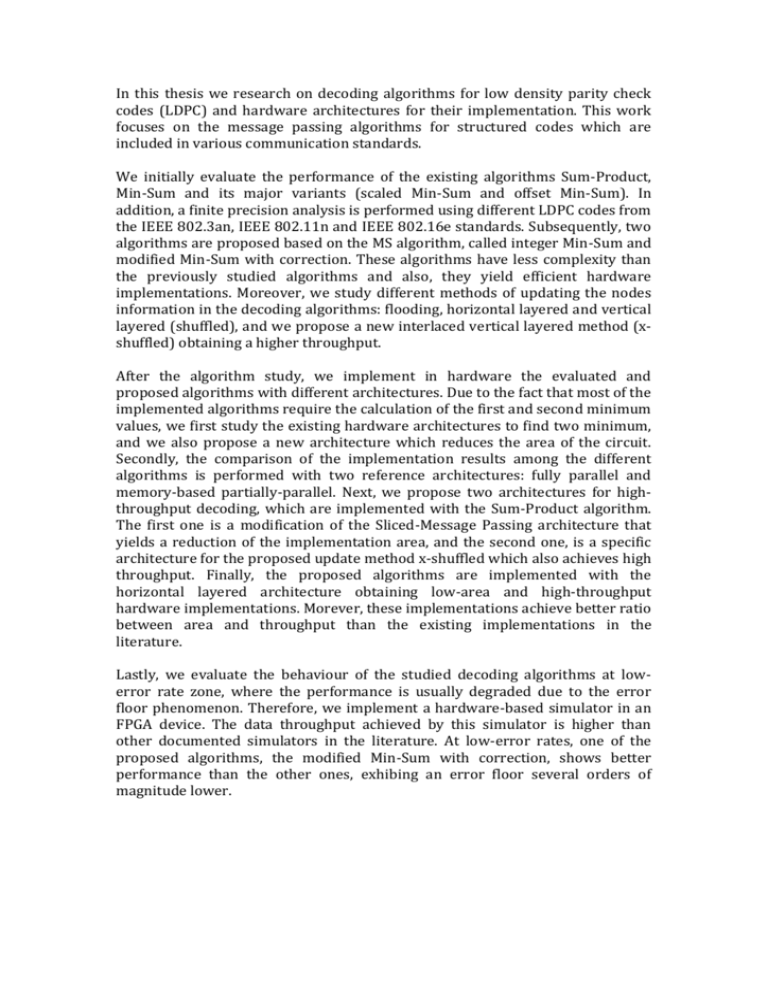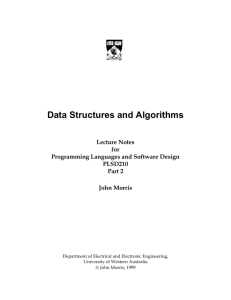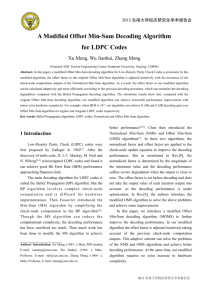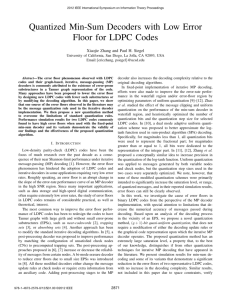In this thesis we research on decoding algorithms for low density
advertisement

In this thesis we research on decoding algorithms for low density parity check codes (LDPC) and hardware architectures for their implementation. This work focuses on the message passing algorithms for structured codes which are included in various communication standards. We initially evaluate the performance of the existing algorithms Sum-Product, Min-Sum and its major variants (scaled Min-Sum and offset Min-Sum). In addition, a finite precision analysis is performed using different LDPC codes from the IEEE 802.3an, IEEE 802.11n and IEEE 802.16e standards. Subsequently, two algorithms are proposed based on the MS algorithm, called integer Min-Sum and modified Min-Sum with correction. These algorithms have less complexity than the previously studied algorithms and also, they yield efficient hardware implementations. Moreover, we study different methods of updating the nodes information in the decoding algorithms: flooding, horizontal layered and vertical layered (shuffled), and we propose a new interlaced vertical layered method (xshuffled) obtaining a higher throughput. After the algorithm study, we implement in hardware the evaluated and proposed algorithms with different architectures. Due to the fact that most of the implemented algorithms require the calculation of the first and second minimum values, we first study the existing hardware architectures to find two minimum, and we also propose a new architecture which reduces the area of the circuit. Secondly, the comparison of the implementation results among the different algorithms is performed with two reference architectures: fully parallel and memory-based partially-parallel. Next, we propose two architectures for highthroughput decoding, which are implemented with the Sum-Product algorithm. The first one is a modification of the Sliced-Message Passing architecture that yields a reduction of the implementation area, and the second one, is a specific architecture for the proposed update method x-shuffled which also achieves high throughput. Finally, the proposed algorithms are implemented with the horizontal layered architecture obtaining low-area and high-throughput hardware implementations. Morever, these implementations achieve better ratio between area and throughput than the existing implementations in the literature. Lastly, we evaluate the behaviour of the studied decoding algorithms at lowerror rate zone, where the performance is usually degraded due to the error floor phenomenon. Therefore, we implement a hardware-based simulator in an FPGA device. The data throughput achieved by this simulator is higher than other documented simulators in the literature. At low-error rates, one of the proposed algorithms, the modified Min-Sum with correction, shows better performance than the other ones, exhibing an error floor several orders of magnitude lower.









